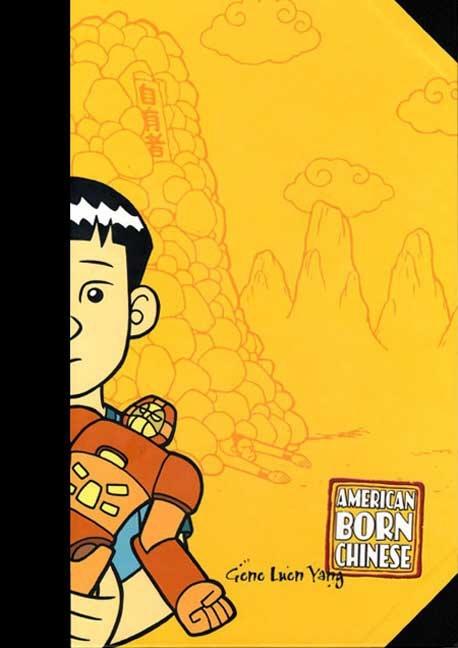Meet-the-Author Recording with Gene Luen Yang
American Born Chinese |
Gene Luen Yang introduces and shares some of the backstory for creating American Born Chinese.
Translate this transcript in the header View this transcript Dark mode on/off
Gene Luen Yang: Hi, this is Gene Luen Yang and I am the author and illustrator of the graphic novel American Born Chinese. I started American Born Chinese around the year 2000. At that point, I'd been doing comics for about five years and I'd always had Asian-American protagonists, but none of the stories I'd done up to that point really dealt with the issue of Asian-American identity.
Since my own ethnic heritage was such an important part of how I see myself, I really wanted to do a project that dealt with that directly. I came up with three different story ideas. The one that gave me the biggest thrill was the Monkey King story because that was something that was from my childhood. My mother used to tell me Monkey King stories as bedtime stories and when I started drawing comics, I knew that I wanted to do something with the Monkey King.
The Monkey King, in Asia, was almost his own genre. Like, here in America we have romance, action adventure, and mystery. Over there they have romance, action adventure, and mystery, and Monkey King. There's so many comics and so many movies of the Monkey King that he practically deserves his own shelf at the bookstore and at the video store. I realized that all these amazingly talented Asian artists had all done their own version of the Monkey King and I couldn't really think of anything that I could add to him that hadn't already been done much better than I could do.
In the end, I hit on that idea of using the Monkey King as a way of talking about the Asian-American experience. That was something I thought that all those Asian artists couldn't do since they weren't Asian-American.
The page I'd like to talk about in American Born Chinese is page 23. It's the very first page of the second chapter. There are a lot of things on this page that I think speak to the comic's medium. I tried throughout this book to use tools of expression that are unique to the comic's medium. The very first panel is a caption box that says, "My mother once told me an old Chinese parable." Now, the words in the caption box can be used in a bunch of different ways. I wanted to use them in three specific ways to achieve three specific things in each of the three story lines.
So in the Monkey King story line I used it more as an omnition narrative voice so that, that story line would come off more of like an old time children's story book. In the second one, I wanted to use it as the voice of the main character of Jin Wang. So throughout this story line, every time you see a caption box, you're really reading the thoughts of Jin.
In the second panel in the word balloon, I have words that are in pointy brackets. That are in the less than and greater than signs. That's a comic book convention that denotes that the words between those brackets are actually translated from another language. And this is something, if you read a lot of comics you'll see this over and over and over again.
And in the last two panels on this page, I gave them different borders because the illustrations in these panels are actually not a part of the primary narrative. They're a part of the narrative that the mother is telling Jin as they're going on this car trip to their new home. So the borders there sort of indicate that it's something separate from what you had been reading in the first two panels.
This Meet-the-Author Recording with Gene Luen Yang was exclusively created in June 2009 by TeachingBooks with thanks to First Second.




